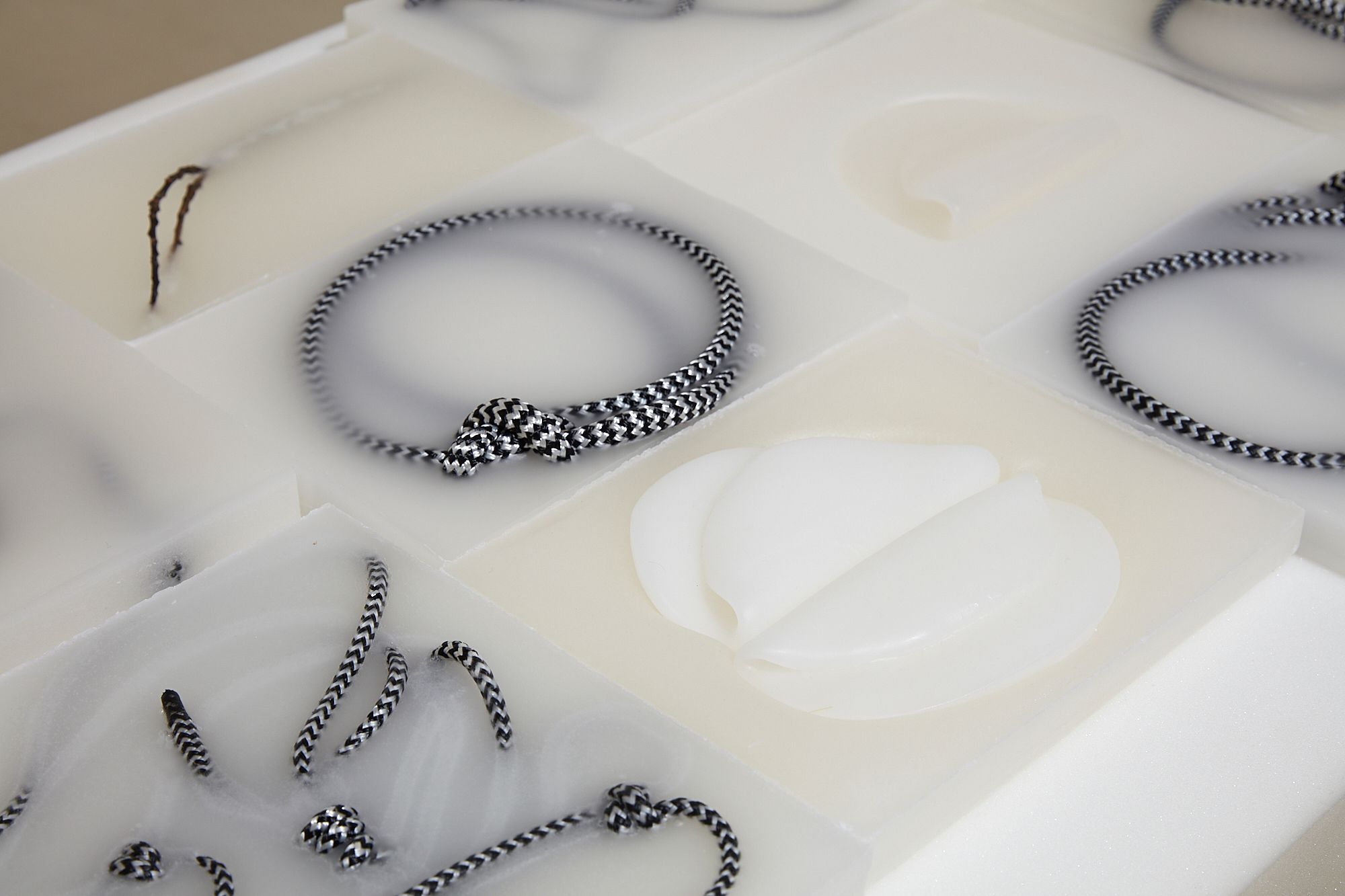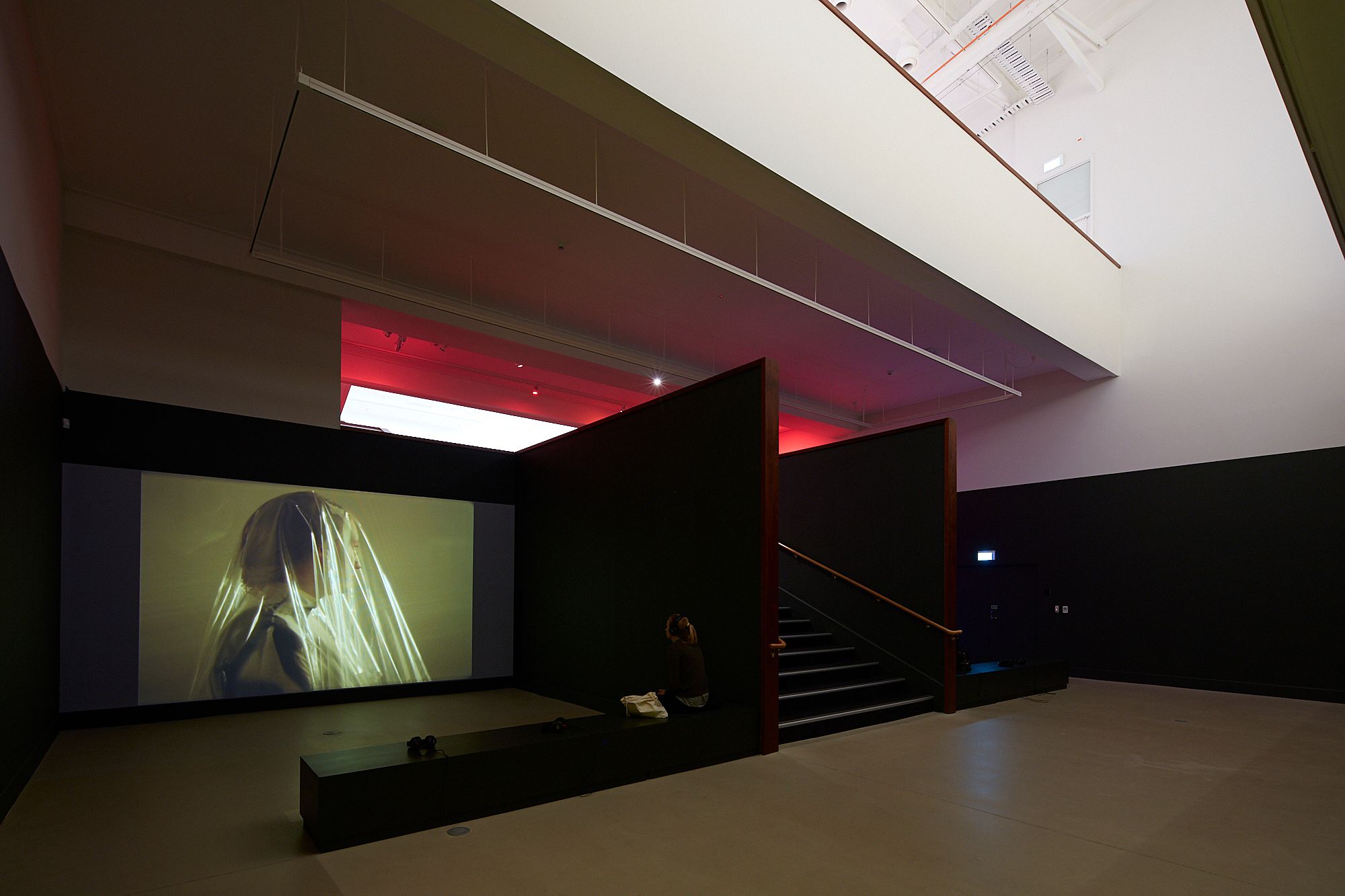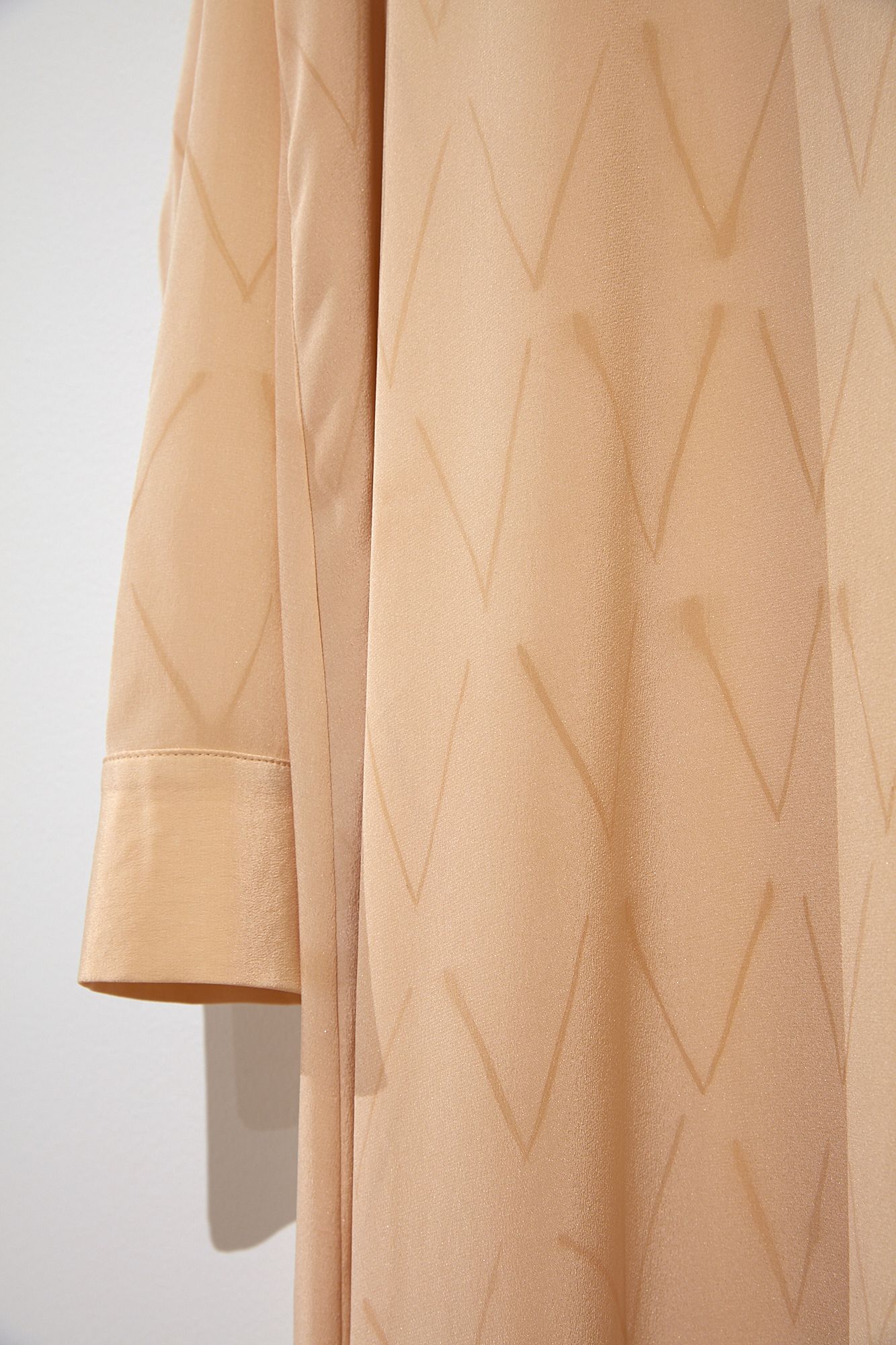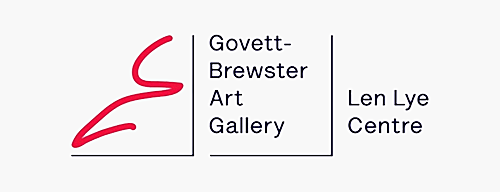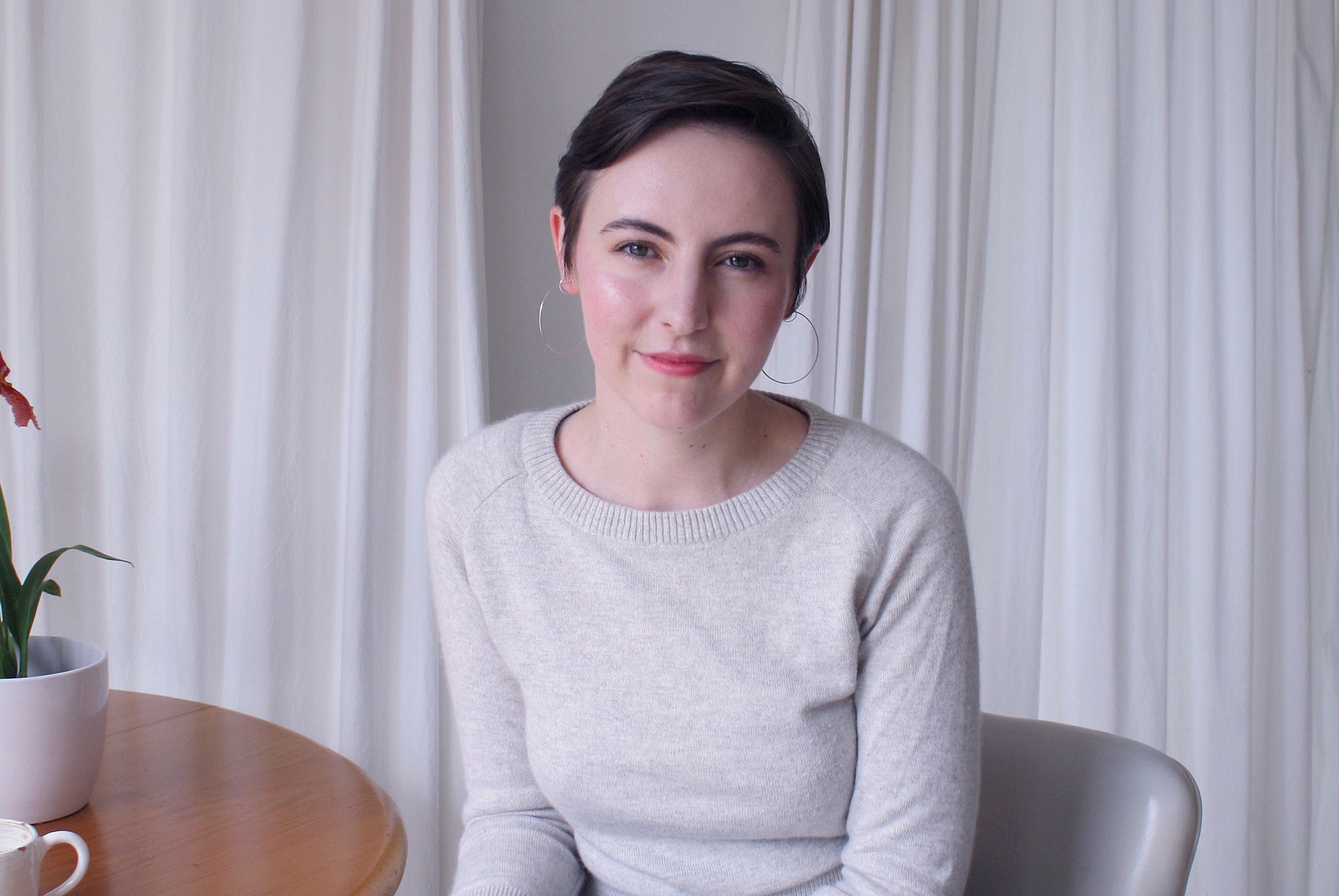Secret Languages, Strangers’ Houses, Snakes: On Sriwhana Spong
What could a medieval female mystic have to offer a contemporary artist?
What could a medieval female mystic have to offer a contemporary artist?
Sriwhana Spong has seen a snake, befriended a rat, cast a spell for a critically endangered bird. She has engaged with all manner of living creatures in her work and yet her latest exhibition is titled for a lack of animal: a hook but no fish.
For me, this is a foreboding title, for where is the fish? Or even more worrisome in plural, where are the fish? Are there no more fish in the river, the lake, the ocean, the world? What we do know is that there is a hook, presumably a fish hook and so violently barbed. I cannot help but think of this sinister little Margaret Atwood poem:
You fit into me
like a hook into an eye
a fish hook
an open eye
This remembering of Attwood, a writer best known for her dystopian fiction, turns out to be eerily appropriate when I read the exhibition text to discover the story behind Spong’s title. At the heart of a hook but no fish is a secret language received by a 12th century German abbess and mystic during a divine vision. Hildegard von Bingen’s Lingua Ignota (Latin for ‘unknown language’) has a known glossary of around 1000 words, remarkably few of which name living creatures. Meanwhile, there is an abundance of words for tools and manufactured objects. The curious nature of these inclusions and omissions prompted Spong to speculate that von Bingen’s language may have been devised for a future in which tools and technology have outlived the animals they were designed to capture, a world where we have the means with which to catch a fish, if only there were any.
*
a hook but no fish is a big deal for Spong. This is her first solo museum exhibition in Aotearoa, and it comes to the Govett-Brewster Art Gallery fresh from an initial showing at London’s Pump House Gallery and with several new additions created during Spong’s two-month residency in New Plymouth. An artist of New Zealand and Balinese heritage, Spong graduated from Auckland University’s Elam School of Fine Arts in 2001 and has exhibited regularly both at home and abroad ever since. Notable amongst her many accolades is her nomination for the prestigious Walters Prize in 2012 for her ethereal exhibition Fanta Silver and Song, originally shown at Gertrude Contemporary, Melbourne, in 2011. The show included silk costumes dyed with soft-drink and a delicately moving geometric sculpture shown alongside Costume for a Mourner (2010), a masterful filmic work reimagining Sergei Diaghilev’s Ballets Russes performance of a lost ballet, drawing information and inspiration from the static fragments that are the only surviving documents of the work: a Stravinsky score, grainy photographs of the dancers and images of the costumes created by Henri Matisse.
This attempt to summarise just one of Spong’s exhibitions may provide some clue as to the scope of research and material complexities typical of her work. It may also illustrate the difficulty of writing broadly about her practice, for there are very few fora with word counts generous enough to accommodate the many stories wreathed into her work, let alone the way these are told through materials, or the way we respond to them. This essay, then, is an attempt to unpack some of these layers by focusing on works from her recent Govett-Brewster exhibition, drawing pearls from the artist talk Spong gave with curator Tendai John Mutambu at its opening weekend. It is also informed by my own personal correspondence with the artist after she had left New Plymouth, heading home to London where she works between her light-filled studio and the reading room at The Warburg Institute Library.
She has this wonderful ability to take an idea and run with it, but never in the direction you expect
Following her Walters Prize nomination, Spong spent two years in Rotterdam completing her MFA at the prestigious Piet Zwart Institute – known to New Zealanders for having played host to a strong lineage of our artists, including Ruth Buchanan, Marnie Slater and Liz Allen. A pivotal moment came during this time when she was asked an incisive question by supervisor Jan Verwoert: What authorises your making? The question was posed after observing the difference between the very serious way Spong approached her work in the studio, and the excited way she approached a project of making bespoke graduation robes for each of the students in the year above. What judgments, he asked, was she bringing to her studio practice that she had perhaps put aside to enjoy the making of these robes? What authorises your making?
The question became an ongoing interrogation for Spong, one that has perhaps been answered through her interest in the lives and writings of female mystics such as von Bingen. She is specifically interested in the way these women worked with their own experiential knowledge – necessarily, for that was all they had, given their exclusion from other forms (von Bingen, for example, never went to school and so was never taught to write – even her Lingua had to be transcribed by men). This strategic way of thinking and working manifests in their writings, which Spong sees ultimately as texts of survival. Over email, she tells me:
They incorporate linguistic techniques that enable them to write without the charge of heresy, but in doing so they create incredibly new and radical forms that, to me, still resonate today, and still offer up ways of thinking about the body and its relationship to what surrounds it.
Theirs are texts that blend fiction and biography, that incorporate wild swings between elation and doubt reflective of their bodily religious experiences, their visions and raptures. I can’t help but think that in many ways, they are texts that function very similarly to Spong’s work – or rather, her work mirrors their style, swirling personal encounters together with fragments from history, mythology, fiction and tradition.
This heady mingling of ideas is the truest pleasure in Spong’s work. She has this wonderful ability to take an idea and run with it, but never in the direction you expect. It’s this ability that makes her practice so immensely difficult to quantify, for she will often keep hold of one idea for a while, leaving it simmering in the background while she tends to something new, eventually mixing them together into the same pot to create a more complex flavour. There seems to be a kind of flickering internal logic to Spong’s selection of ideas, but it is a logic that, as a viewer, you can only really follow with your feelings. When I suggest that she could be considered something of a collector – of relationships and references that will be interpreted as objects and performances, rather than of readymade objects themselves – Spong isn’t so sure.
It’s about chiming with something. An encounter with something that makes you curious, and allowing yourself to follow that curiosity, no matter how silly it may seem at the time. I don’t think I collect things, it’s more about resonating with things, allowing things to leave an imprint, an imprint that you feel led to try and understand.
One such encounter that left an indelible imprint was with a garter snake she almost stepped on during an aimless stroll through a Pittsburgh graveyard in 2016. Her own instinctive reaction to this other body – time slowed, colours pinged, language fell away – was the catalyst for having-seen-snake (2017), a haunting film best described in three parts.
The first is a series of not-quite-still shots of bodies overlaid with nature, the shots becoming increasingly abstracted, becoming technicolour through use of a three-colour-separation filming process, the ambient noise rising to a roar as the film progresses. The second part is lusciously tactile and even more abstract: an expanse of film is hand-painted so when the work is viewed, a long line of shimmering colour rushes by like the glistening, flowing body of a snake. Long hisses fill your ears, sometimes sounding more like a gentle human shush than a menacing snake. These first two parts attempt to convey the feeling of Spong’s encounter, to restage the heightened state of having-seen-snake – a title pinched from something the acclaimed short-story writer George Saunders said in an interview while describing his aversion to realist writing:
It’s kind of like, if you see a snake and it scares the shit out of you, typing, ‘Suddenly I saw a snake’ doesn’t get it – has nothing to do with what you felt in that instant. How to use or exploit or get at that (having-seen-snake) energy? The energy of what you actually felt in that instant? That’s the question.
The third part comprises an off-screen interview with herpetologist José Padial that plays while the camera roves over specimen jars filled with countless scaly bodies. Padial speaks candidly about his work, expressing his initial reservations with the processes involved in creating a taxonomy – that is, with killing rare creatures so they may be preserved, understanding that this is all in service of their ultimate goal of conservation. He speaks also of how they assign names to new specimens – an act that Spong describes as a way of “pulling the snake into culture.”
But of course, efforts at preservation are never guaranteed, and while new species are being pulled into culture through naming, others are falling out of existence. The creature Spong had intended to explore during her Pittsburgh residency with Neu Kirche was the critically endangered Rothschild’s mynah, endemic to the island of Bali, in part due to twelve of these rare birds being housed in Pittsburgh’s National Aviary. In many ways, having-seen-snake is about the birds as much as it is about the snake: the film ends with the flirtatious sound of mynahs singing over the screen faded to black, a potent reminder of what is at stake, of what we stand to lose.
Her language was a way to articulate her world on her own terms – a radical act for a woman who was never taught to write
having-seen-snake examines the power inherent in naming, making the proposition that to be able to exist fully in culture, one must exist in language. As a language known to only a tiny ring of people, the Lingua Ignota complicates this idea. Instead of functioning as a tool to bring things into culture, Hildegard’s language pulled things from the world into her sphere, infusing them with new and personal meaning: these were the things most prominent not in the world, but in her experience of it. Her language was a way to articulate her world on her own terms – a radical act for a woman who was never taught to write. Over email, Spong tells me:
What I am drawn to about Hildegard’s Lingua Ignota is that it enacts what Michel de Certeau calls an ‘erotics in language.’ It breaks apart Latin sentences, creates holes and gaps into which Hildegard inserts her own private glossary. This glossary names the things closest to her, what surrounded her, so it’s a great example of public language being shattered and caressed by a private language.
Interestingly, when Spong talks about the Lingua Ignota, she often speaks in metaphors of disease – of Hildegard’s language “infecting” the classical high language of Latin, rotting its foundations. I asked her if there was anything inherently grotesque in Hildegard’s language, or whether this alignment was perhaps something others had burdened it with. Spong explains:
A woman’s body at the time was strongly associated with death and illness, so you have this wonderful image of Hildegard…infecting the high language of Latin when she inserts her own words into it. I like its economy too – it’s very practical. By using her own nouns but utilising already existing Latin adjectives, verbs and sentence structure, she does just enough to create a new form – she doesn’t just throw the baby out with the bath water, she merely infects an existing structure. There is nothing abject to me in her Lingua specifically, it’s about how she used it. The glossary does include words for men’s and women’s genitalia, which was seen as inappropriate by many commentators – Wilhelm Grimm of the Brothers Grimm was ‘disturbed’ by it because of Hildegard’s gender and role as an abbess.
The figure of Hildegard haunts a hook but no fish, her spirit evoked across numerous works with words from her Lingua regularly employed as titles. Her physical body is conjured especially in the work Scaurin Ranzgia (night tongue) (2018), part of an ongoing series that sees Spong making pieces of furniture in homage to figures she admires, using their initials to inform the designs. Spong refers to this particular work as a “bed for Hildegard,” and has used the kind of rope intended for bridling horses to form serpentine letters that have then been embedded within wax tablets, the equestrian rope in particular reading as a potent metaphor for the systems of restraint that Hildegard lived within.
I have come to realise that the common thread binding Spong’s works together is more a rope: they are about undermining structures of control, about bodies, materials and words refusing to stay in line
Hildegard is explored most thoroughly in the 25-minute film after which the exhibition has been titled, in which we are introduced to Hildegard and all that she has come to symbolise for Spong. The film begins much like having-seen-snake, with lingering shots on scenes of nature and rock – the ruins of the monastery where Hildegard spent 39 years of her life. A female figure shrouded in a clear plastic sheet looks away from the camera. Through captions on the screen, she is introduced to us as ‘H,’ the receiver of “a previously unknown language. A fresh way to read and write the world.” We are told that “[t]his language offers an unmaking and a remaking through the body of a woman…H’s language is a secret hoard of caterpillars from which H’s body will metamorphose, opening to call things with a new tongue.” This phrase in particular highlights the transformative potential of creating a new language, of making outside structures that have not been set for you or by you, of making something that is for you and by you. Of course, this is precisely what Spong herself does, too. In her artist talk, she explained that she “always think[s] of art history as being the history of male looking, and predominately white male looking.” She goes on to discuss how this is an interesting position to make and think in as a woman artist, because you are always in a sense “breaking and entering into a stranger’s house,” inserting yourself into a structure that is not your own.
With this in mind, it’s very easy to see why Spong is so attracted to these female mystics, why her work seems to echo their strategic ways of writing, why they authorise her making. When I idly ask what the most important thing she learned at Piet Zwart was, she tells me it was the discovery that she enjoyed writing, made obvious by the exhibition’s inclusion of Spong’s own texts; calm, poetic pieces with an undercurrent of riot. I’m thinking in particular of Bad Review (2018), a new work made in response to a negative review of her Pump House exhibition. In this piece, Spong recycles and reclaims the critic’s words, rearranging them to form a lyrical response that highlights the 'abject' qualities the writer couldn’t help but fault: anarchic abbess / her flaw her force her / overabundance / her oversaturation. Her sculptural works are the same, apparently elegant and restrained, made of steel, lacquer and rope, but then organic matter is introduced, Coca Cola and grease, honey dripping down walls, wet slabs of clay, foliage and cold KFC chips; materials that will drip, rot, warp or disobey. I have come to realise that the common thread binding Spong’s works together is more a rope: they are about undermining structures of control, about bodies, materials and words refusing to stay in line.
How does one neither ennoble nor degrade something that’s outside of you?
Perhaps this is why Spong is so attracted to animals, so interested in excavating her own encounters with them. For in spite of all that humans do to try and control animals, we are still often outsmarted by them, surprised by their ingenuity, their strategy. Spong seems always to approach animals not as something to be controlled but as somebody to be encountered; she never attempts to manipulate their movements or overburden their images with concepts. When speaking about her encounter with the garter snake in the graveyard, or about the rat who made its nest outside her bedroom window and became the inspiration for her performance Tasseography of a Rat’s Nest (2015), Spong relays this question: “How does one neither ennoble nor degrade something that’s outside of you?” Her recognition of the agency of these animals is palpable in her works, which most often centre on her own fathoming of their encounters, encounters that often take place by luck or chance – and what is chance but a failure of control?
*
The final scenes of a hook but no fish are so enchanting they feel almost like a dream. They comprise a series of still-camera shots taken in an unremarkable urban environment, primarily in damp, dingy back-alleys lined with garbage. And here, in these most unlikely settings, are herons. Surprisingly large, impossibly elegant coastal birds with graceful necks and thin sharp beaks stepping carefully between Styrofoam box lids and plastic sacks. These are birds who live on fish, filmed hunting amongst human refuse, searching, I imagine, for fish scraps they are more likely to find here than in the ocean – or is this the future in which there are no fish at all?
I can’t help but think the fish are still there, they’re just hiding. They’ve come to understand hooks and herons, learned to move strategically or even built their own rivers and oceans, just for themselves.
Sriwhana Spong
a hook but no fish
Govett-Brewster Art Gallery
12 May – 22 July 2018
This piece is presented as part of a partnership with the Govett-Brewster Art Gallery. They cover the costs of paying our writers while we retain all editorial control.







